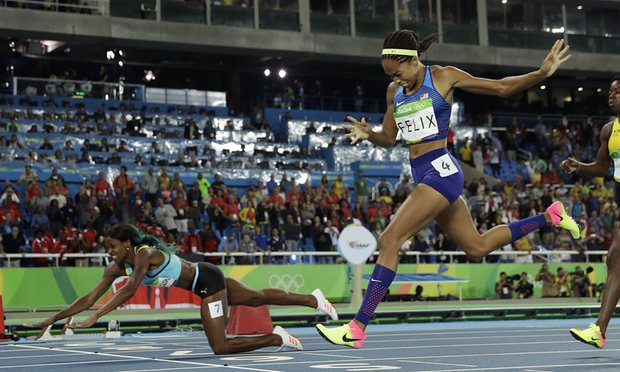When a picture is worth more than a thousand words
How imaging is transforming finish lines at the Olympic games
There’s nothing quite like the drama of the Olympics: Elite athletes at peak physical condition, years spent dedicated to a single goal. The focus; facing down the competition; visualizing the win. That split second before looking up to see the result; the jubilation and anguish of medals won and lost.
Incredibly close finishes are the stuff of legend at the Olympic games, due in no small part, to the technology that helps decide the results. What used to be a simple video replay in a judge’s booth has been replaced by increasingly sophisticated equipment that enables an image for broadcast around the world within seconds. One finish-line camera at this year’s games takes an impressive 10,000 images per second, making it near impossible to argue who should be on top of the podium at the end of any race.
Rio has had its share of close calls and exciting moments. Take, for example, Shaunae Miller’s ‘dive’ for the win in the women’s 400 metres. Her technique for crossing the line sparked controversy, but the evidence was clear: she finished ahead of Allyson Felix to clinch the gold.

On the water, cameras determined New Zealand’s Mahe Drysdale’s gold medal in the men’s single sculls, making him a repeat winner.
And Dutch marathon swimmer Ferry Weertman grasped gold in a photo finish, narrowly beating Greece’s Spiros Gianniotis after 10K and almost two hours in the water.

Photo finishes have been part of the excitement at past games, too. Back at the 1996 games in Atlanta, Gail Devers beat Merlene Ottey by the slimmest of margins in the women’s’ 100m. The two finished with the identical time – 10.94 seconds – but the camera showed Devers’ edge. Although Ottey contested the result, IAAF judge Daniel Lamare stated, “It was an easy decision to make, it wasn’t difficult. Once the picture was enhanced, it clearly shows Devers was five centimeters ahead.”
In another classic photo finish, Michael Phelps won the 100m butterfly in Beijing, 2008. He touched the wall 0.001 of a second ahead of Serbia’s Milorad Cavic. Interestingly, in swimming, you can’t get any closer than 1/100 of a second. While cameras can snap thousands of shots in the blink of an eye, it’s the pool’s measurements that hold the sport back from more precise finish times. According to FINA, (swimming’s governing body) pools can vary in length by a margin of up to 3 centimetres. So you could say a swimmer finished a thousandth-of-a-second faster than someone else, but you couldn’t guarantee that the winner didn’t have a shorter distance to travel.
While photography is certainly a big part of the drama at the finish line, it also plays a key role in other decisions. The net cameras determine goals in hockey; even basketball referees use cameras to make sure players respect the shot clock. And the Rio games saw photo technology introduced for the first time to help line calls in beach volleyball. And while some argue that it slows the pace of play, proponents feel that it makes it more enjoyable to watch, and spectators and players alike appreciate that the right calls are made.
What’s next? It remains to be seen where technology will take us in the next four years, but rest assured that come the 2020 games in Tokyo, there’ll be some exciting new innovations in play.



 To Catch a Sprinter
To Catch a Sprinter  Real-Time 3D Replays Bring Fans Closer to Action
Real-Time 3D Replays Bring Fans Closer to Action 